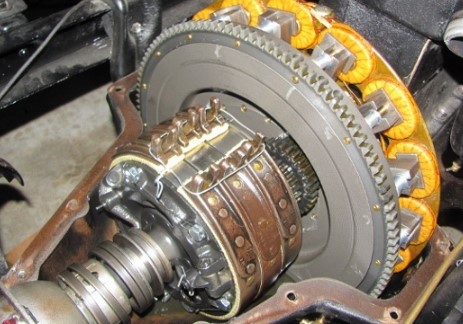Broken transmission bands play a vital role in shifting gears in automatic transmissions. Over time, these metal straps can wear down or break, causing them to lose their ability to hold gears in place properly. This article will explore the symptoms of transmission band issues and provide guidance on how to address these problems.
Indications that your transmission bands may need adjustment include an RPM of over 3,500, acceleration delays, inability to reverse, harsh responses or strange noises when shifting gears, and problems shifting gears, among others. It’s essential to recognize these signs to address the issue promptly.

Transmission Band Adjustment Symptoms

Many people assume that adjusting or tightening the transmission band is the solution when they face problems. However, this isn’t always the case. It’s crucial to determine whether a band adjustment is necessary by observing the symptoms. These symptoms can help identify when your transmission band requires proper adjustment:
- Leaking Transmission Fluid: If you notice red fluid underneath your car, there’s a chance that your transmission band needs adjustment. Leaking fluid onto a hot surface can be dangerous.
- Burning Smell: A burning smell may also indicate worn bands. Early detection is vital to fixing the transmission.
- It Won’t Stay in Gear or Engage: This problem may also suggest issues with your automatic transmission band.
- Shifts Miss Gears or Delay: These problems can result from a loose transmission band. If left unresolved, it can lead to overheating and severe internal damage.
- Odd Noises: Humming, clunking, or buzzing sounds from the transmission can also signify a transmission band problem.

Detecting the Need for Transmission Band Adjustments
If you’re unsure whether your transmission is slipping or if band adjustments are needed, consult a mechanic for an evaluation and cost estimate for replacement. Adjusting or replacing bands often requires dismantling the transmission, so it’s best to have a professional handle the repair.
What to Do When Your Transmission Band Needs Adjustment
If your transmission band requires adjustment, follow the owner’s manual instructions for adjusting the pressure. If you can’t do it yourself, take your car to a mechanic or repair shop. Maintaining the right pressure is crucial, as too low or too high pressure can lead to dangerous situations. Some simple steps for adjusting bands include tightening the band adjustment screw to 72-inch lbs., unscrewing the band adjuster 3.5 turns, and tightening the band adjustment screw’s locking nut.
Cost of Replacing Transmission Bands
If your transmission bands are old and excessively worn, they may need replacement to prevent further damage to your transmission. According to Transmission Repair Cost Guide readers, the average cost of transmission replacement ranges from $1,800 to $3,400. A used/salvage transmission costs between $800 and $1,500, a rebuilt transmission between $1,100 and $2,800, and a remanufactured transmission between $1,300 and $3,400.

Final Thoughts About Broken Transmission Bands
In conclusion, properly functioning transmission bands are essential for smooth and efficient gear changes in your vehicle. Ignoring signs of wear and tear or malfunctions can lead to more significant issues and costly repairs in the long run. By staying aware of the common symptoms of transmission band problems and seeking professional help when needed, you can maintain your vehicle’s performance and extend the lifespan of its transmission system.
Remember, early detection and intervention are critical to preventing further damage and costly repairs. If you notice any of the symptoms discussed in this article, it’s essential to consult a qualified mechanic to diagnose and address the issue. By staying proactive in your vehicle’s maintenance, you can ensure a safer and more enjoyable driving experience for years to come.
